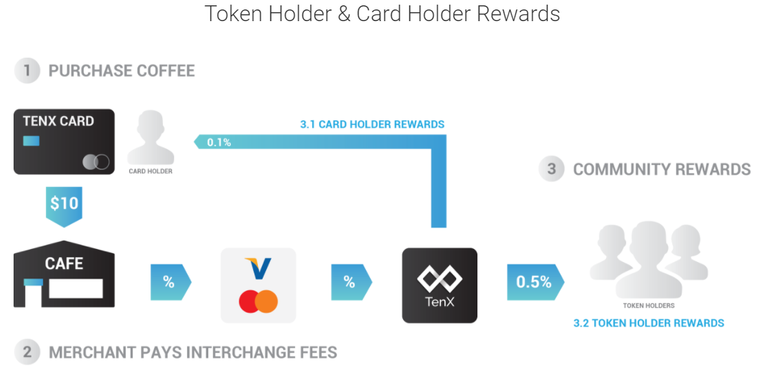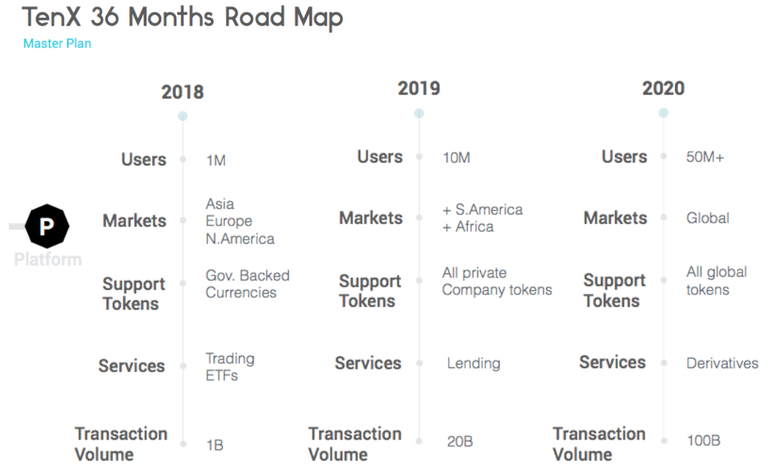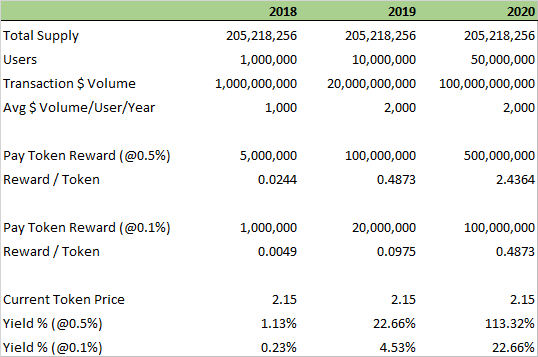I ran across TenX on coinmarketcap.com's top 100 coins/tokens list ranked by market cap. Why did I decide to look into TenX as the first token? Because of the name, of course! People should expect to earn 10 times their money investing in crypto, right?
All joking aside, I think TenX's mission of becoming the bridge between the current method of consumer payments and cryptocurrency assets could add tremendous value if it gains mass adoption. In terms of likelihood of success, it's probably higher than other crypto companies that want to displace and circumvent the entire financial system altogether.
Why TenX has a Good Chance of Winning vs. other Crypto Approaches
The world financial system is the most difficult industry to disrupt because banking essentially depends on trust. While there have been advances in how effective the services that the financial system provides to users, most banks have adopted these new technology or methodologies very slowly, because they can.
Getting someone's money across international borders in 1 day versus 3 days is not as important as actually getting the money transferred safely. If there was a 1% chance that the money would be intercepted and stolen along the way, but you could get it there quicker, most would rather choose to go the safe, slower route.
What's good about TenX's approach to bridging the crypto financial system with the traditional banking system is that its not trying to be a threat or disrupt any system that's already in place. Its approach is to be additive or complementary. Because the card holder still uses the rails of the payment networks in exchange for a fee, most of the big powerhouses in the financial industry would be willing to give it a shot. That's better than trying to replace Visa or MasterCard altogether. We have to remember that this isn't Amazon disrupting retail companies across different geographies. This is the world banking system that we're talking about here.
PAY Token Rewards
Because of the way the token rewards are structured, it is possible to estimate what the TenX PAY token could be worth or at least estimate the the yield of the token in the future. This is net of what the "network value" of the tokens would be, just pure economical value.
Here's a summary of the rewards laid out below. A TenX card holder uses his/her debit card (currently the only option, looking to expand to credit in the future) to make a standard purchase at a merchant. The TenX network converts any qualified crypto asset into fiat currency right before the purchase for the exact amount due. The merchant discount is split between interchange, network and TenX fees. TenX is estimating that the Pay token holder will receive 0.5% and the card holder 0.1% of the transaction amount.

If you look at the company's road map in the whitepaper, there are estimates laid out for number of users and annual transaction dollar volume until 2020. If you use their estimates (which could prove to be conservative if mass adoption happens), you can easily estimate what the annual yield of the PAY token would be given current prices.

I made the calculations below for the stated 0.5% reward rate and a lower 0.1% reward rate. If the transaction volumes are what is being projected here, the annual yield on a PAY token by 2020 would be 113% in the 0.5% reward rate scenario and 23% in the 0.1% reward rate scenario.

Problem with the Reward Assumption
The best comparison to TenX's value add for the merchant is Apple Pay. The merchant can run his/her business without having to change their method at point of sale. The benefit of Apple Pay is that customers that want to use mobile banking can choose to do so, hopefully expanding the entire pie of payment volumes.
Apple Pay gets 0.15% of each transaction done through their wallet in the U.S. where interchange fees are higher relative to the rest of the world. Internationally, it can be less or more depending on the country.
In the U.S. there is something call the Durbin Amendment, which requires debit card interchange fees to be capped at $0.12 + 0.5%. Credit card interchange fees are much higher. In Europe, the cap is for 0.3% for Credit and 0.2% for Debit cards, for open network cards like Visa and Mastercard. In Australia and New Zealand, there is a cap at 0.5% for credit cards.
If the banks are getting 0.2%-0.5% for their interchange fees, there's no way that the PAY token rewards can be as high as 0.5%. While the company would like to pay that amount in the future, I believe that it will be reduced over time to 0.1% or lower.
Other Issues
There are other obstacles that will possibly delay the pay out for the PAY token. TenX has to work with regulators, banks and payment networks of each country they want to operate in. If you take Apple Pay as an example, they started the project in 2013 and announced it in Sept 2014 for the US. The UK, Canada and Australia followed in 2015. China, Singapore and others began accepting in 2016. Even for a giant company such as Apple, it takes years to get compliance in order for a region.
Things to look forward to:
Announced of partnerships with networks for the different countries.
Any user or average spend data that is ahead of plan.
Obtaining a banking license in different countries.
Sources: www.tenx.tech, www.wikipedia.org
TenX is one of my favorite cryptos for sure. They have a brilliant team and I like that they stay in close touch with everyone, I watch updates on youtube constantly from one of the co-founders. I really think this is a solid company and it is going places!
Welcome to steemit! You wrote a great article, Im sure you will do fine on this platform. I followed you and look forward to seeing more great work from you! :)
Thanks, moderndayhippie! I'll be posting more about other altcoin / tokens in the future.